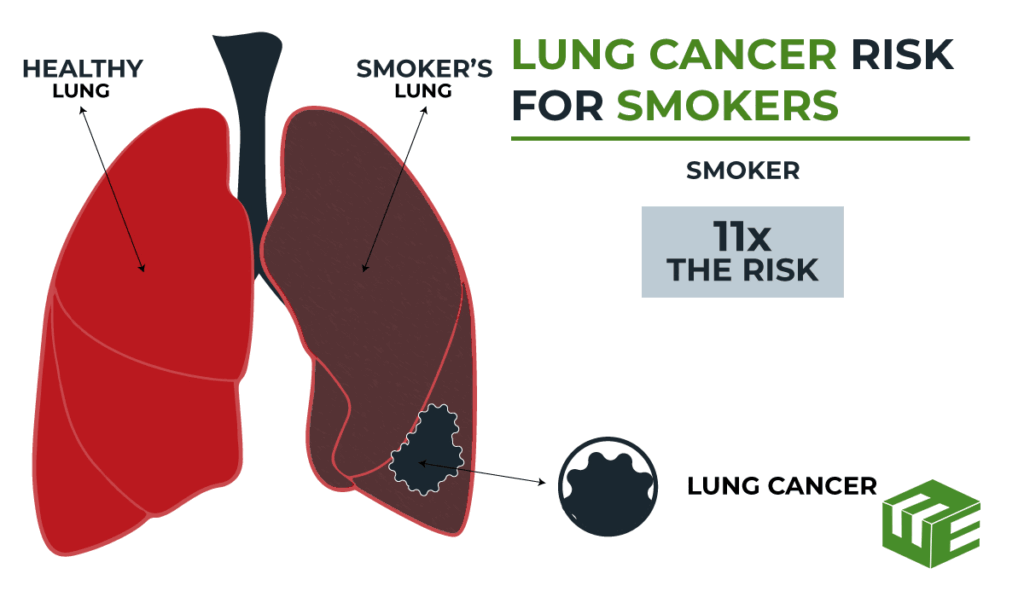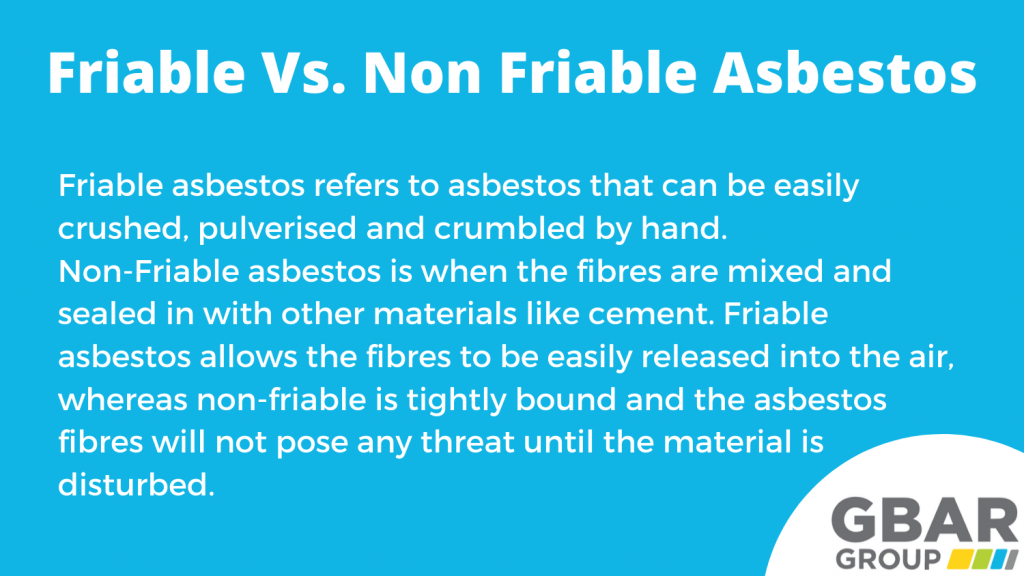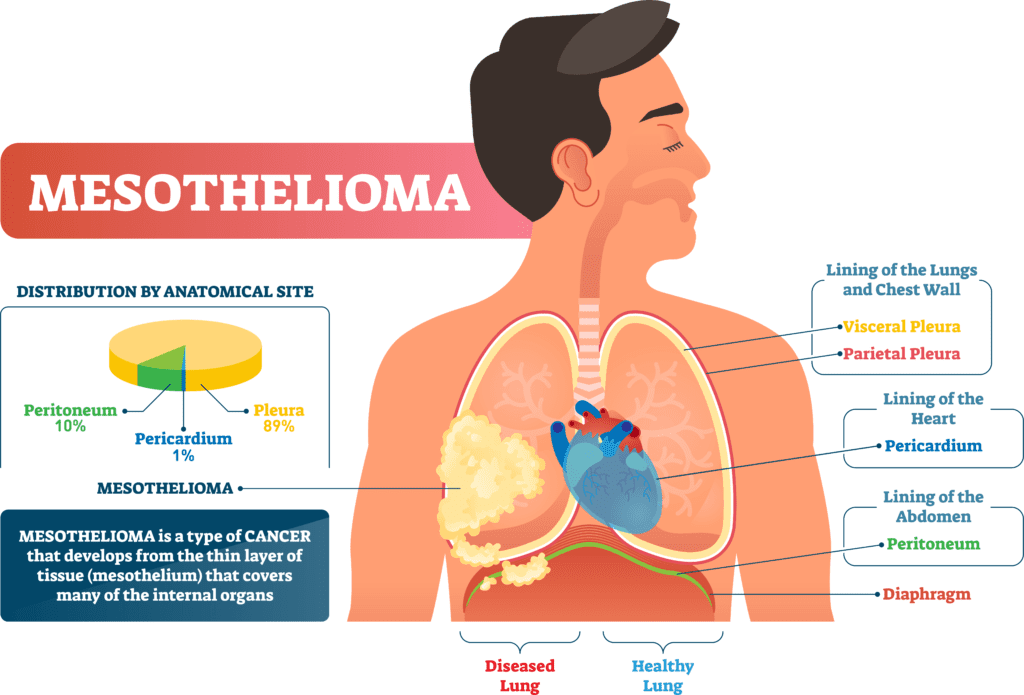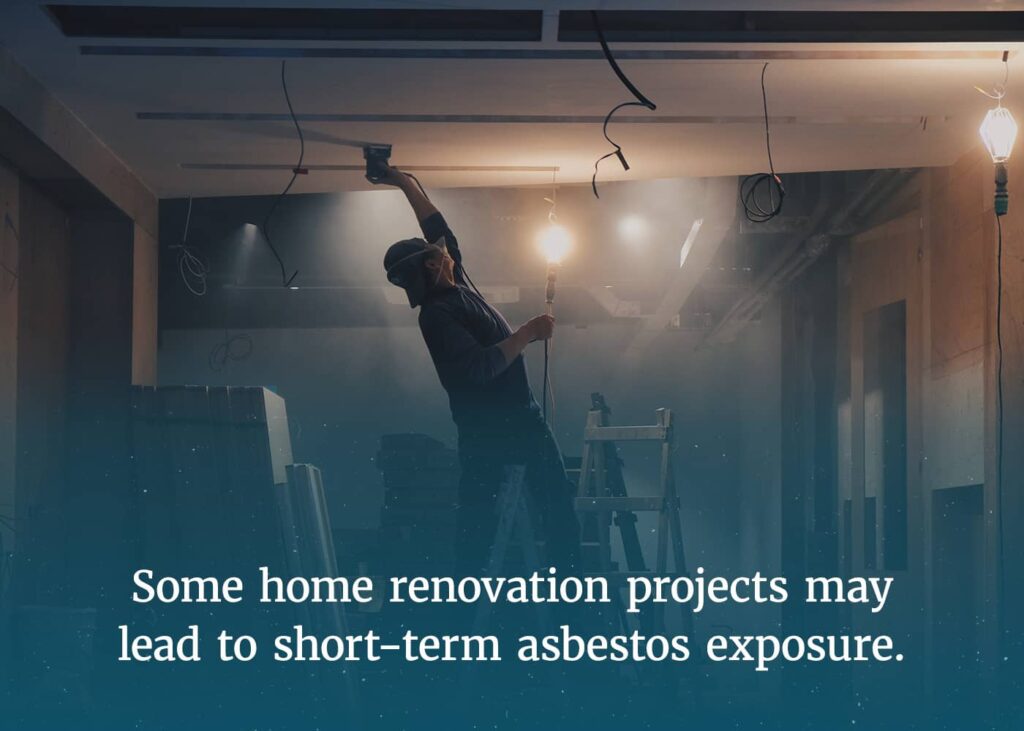In the ongoing discussion regarding health risks, the question arises: is asbestos worse than smoking? While both asbestos exposure and smoking pose significant dangers to our well-being, comparing the two in terms of severity can be complex. This article explores the potential health hazards associated with asbestos and smoking, shedding light on their respective risks and offering insight into why this debate continues to spark public interest.
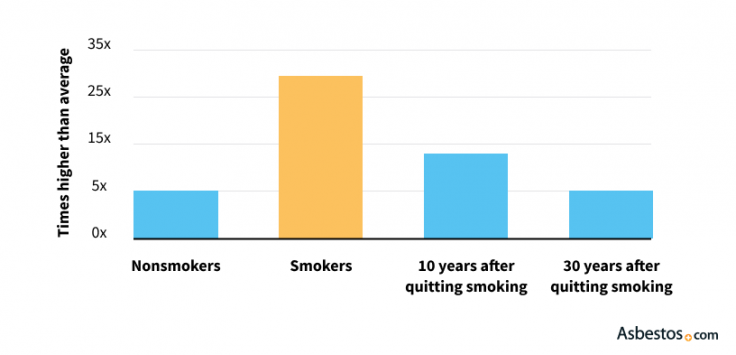

The Health Effects of Asbestos
Asbestos is a naturally occurring mineral that has been widely used in various industries due to its heat resistance and durability. However, prolonged exposure to asbestos has been linked to several serious health conditions. The three most common health effects associated with asbestos exposure are lung cancer, mesothelioma, and asbestosis. These conditions can have devastating impacts on an individual’s health and overall well-being.
Lung Cancer
One of the most significant health risks of asbestos exposure is the development of lung cancer. Research has shown that individuals exposed to asbestos fibers are at a higher risk of developing lung cancer compared to those who have not been exposed. The risk is particularly high in individuals who have been exposed to asbestos for extended periods or have a history of heavy exposure. Lung cancer caused by asbestos typically develops several years or even decades after the initial exposure.
Mesothelioma
Mesothelioma is a rare and aggressive form of cancer that primarily affects the lining of the lungs, abdomen, or heart. It is directly linked to asbestos exposure, and the vast majority of mesothelioma cases can be attributed to asbestos fibers. The long latency period of mesothelioma, often ranging from 20 to 50 years, makes it difficult to detect and treat in its early stages. Once diagnosed, the prognosis is generally poor, as the cancer has often spread to other parts of the body.
Asbestosis
Asbestosis is a chronic lung disease caused by the inhalation of asbestos fibers. When these fibers are inhaled, they can cause scarring and inflammation in the lungs. Over time, this scarring can impair lung function, leading to symptoms such as shortness of breath, fatigue, chest pain, and a persistent cough. Unlike lung cancer and mesothelioma, asbestosis is not a form of cancer but can still have a significant impact on an individual’s quality of life.
The Harmful Effects of Smoking
Smoking is a well-known health hazard and is responsible for a multitude of serious health conditions. The harmful effects of smoking extend far beyond lung cancer and include chronic obstructive pulmonary disease (COPD) and heart disease. Understanding the risks associated with smoking is crucial for individuals who are looking to protect their health and make informed decisions about their lifestyle choices.
Lung Cancer
Just like asbestos exposure, smoking is a major contributing factor to the development of lung cancer. In fact, smoking accounts for the vast majority of lung cancer cases. The chemicals and toxins present in tobacco smoke can damage the cells in the lungs and lead to the growth of cancerous cells. The risk of developing lung cancer increases with the duration and intensity of smoking.
COPD
Chronic obstructive pulmonary disease (COPD) is a progressive lung disease characterized by inflammation and irreversible damage to the airways. Smoking is the leading cause of COPD, with around 80-90% of COPD cases being directly linked to smoking. This condition causes a range of symptoms such as shortness of breath, persistent coughing, wheezing, and frequent respiratory infections. COPD significantly impacts an individual’s quality of life and can be life-threatening in severe cases.
Heart Disease
Smoking also has detrimental effects on cardiovascular health and is a major cause of heart disease. The toxic chemicals in tobacco smoke can damage the blood vessels and restrict blood flow, increasing the risk of conditions such as coronary artery disease, heart attacks, and strokes. Additionally, smoking can cause high blood pressure and increase the likelihood of blood clots, further raising the risk of heart disease.
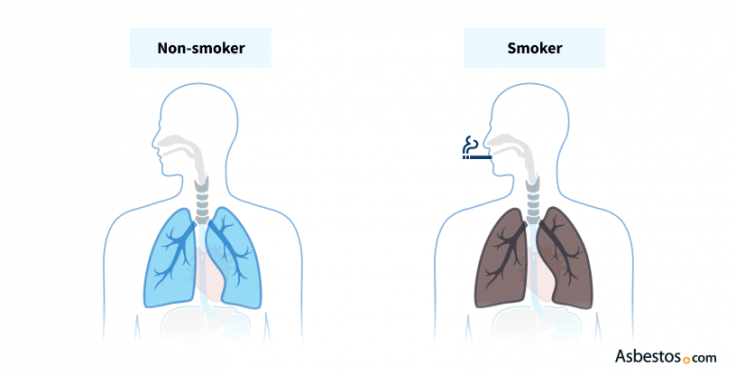

Understanding Asbestos
To fully comprehend the risks associated with asbestos exposure, it is essential to understand what asbestos is, its various types, and common uses in industries.
What is Asbestos?
Asbestos is a family of naturally occurring minerals composed of long, thin fibers. It possesses excellent heat resistance, electrical insulation, and durability, which made it desirable for various industries. Asbestos fibers are resistant to heat, fire, and many chemicals, making them ideal for applications in construction, insulation, and manufacturing.
Types of Asbestos
There are six different types of asbestos, classified into two broad categories: serpentine and amphibole asbestos. Chrysotile, a serpentine asbestos, is the most commonly used type and accounts for approximately 95% of all asbestos used worldwide. Amphibole asbestos includes various types such as crocidolite, amosite, tremolite, anthophyllite, and actinolite. These types of asbestos are generally considered to be more hazardous to health compared to chrysotile.
Common Uses of Asbestos
Asbestos has been widely used in various industries for decades due to its unique properties. Some common applications of asbestos included insulation in buildings, fireproofing materials, cement pipes, brake pads and shoes, gaskets, and roofing materials. It was also commonly used as an additive in paints, adhesives, and plastics. Asbestos-containing materials were prevalent in many workplaces and homes, putting individuals at risk of exposure.
Understanding Smoking
Smoking refers to the act of inhaling smoke produced by burning tobacco or other substances. It is the leading cause of preventable deaths worldwide and poses significant risks to both smokers and those exposed to secondhand smoke.
What is Smoking?
Smoking, primarily associated with tobacco use, involves inhaling the smoke produced by burning cigarettes, cigars, or pipes. Tobacco smoke contains thousands of harmful chemicals, including nicotine, tar, carbon monoxide, formaldehyde, and benzene, among others. These chemicals can have detrimental effects on the body when inhaled.
The Chemicals in Tobacco Smoke
Tobacco smoke is a toxic mixture that contains numerous harmful substances. Nicotine, an addictive stimulant, is responsible for the addictive nature of smoking. Tar, a sticky substance, contains various carcinogens and can coat the lungs, leading to breathing difficulties and lung damage. Carbon monoxide, a poisonous gas, reduces the oxygen-carrying capacity of blood and strains the heart. Other chemicals present in tobacco smoke, such as formaldehyde and benzene, are known to cause cancer and can damage various organs in the body.
Health Risks of Smoking
Smoking is responsible for a wide range of health risks, both short-term and long-term. Short-term effects of smoking include bad breath, yellowed teeth, coughing, and reduced lung capacity. In the long term, smoking can lead to serious diseases such as lung cancer, COPD, heart disease, stroke, and various types of cancer, including oral, throat, and bladder cancer. Additionally, smoking during pregnancy can harm both the mother and the unborn child, leading to complications and developmental issues.
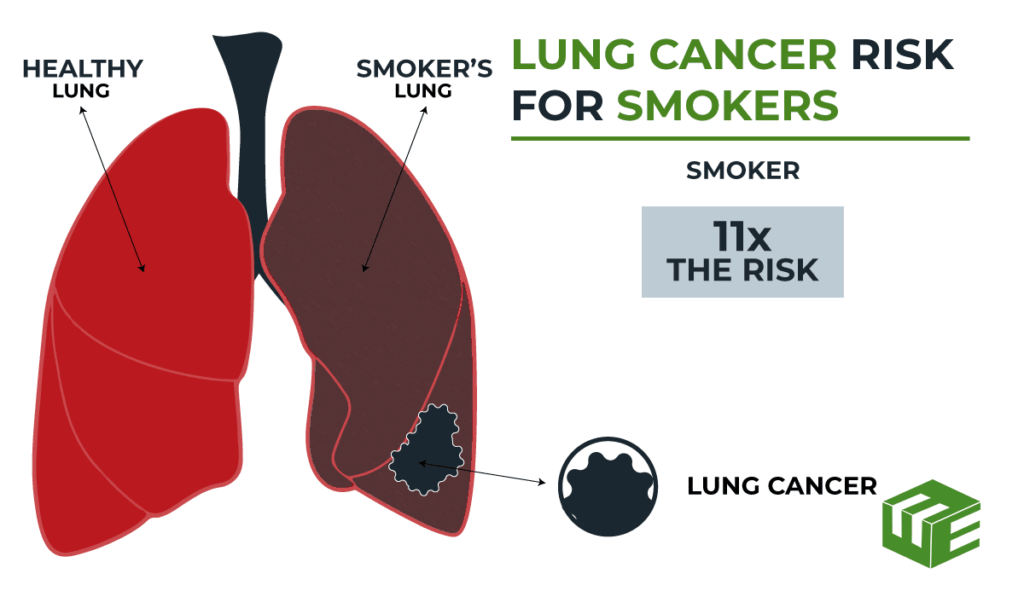

Comparing the Health Risks
When comparing the health risks associated with asbestos exposure and smoking, it is important to consider several factors such as direct links to cancer, risk factors, and long-term health effects.
Direct Link to Cancer
Both asbestos exposure and smoking are strongly linked to an increased risk of developing various types of cancer. Asbestos exposure is directly connected to lung cancer and mesothelioma, while smoking is a leading cause of lung cancer and contributes to several other types of cancer such as oral, throat, and bladder cancer. The carcinogenic properties of both asbestos and tobacco smoke make them significant risk factors for cancer development.
Risk Factors
The risk factors for asbestos-related diseases primarily include occupational exposure in industries such as construction, shipbuilding, and asbestos mining. However, non-occupational exposure can also occur in cases where asbestos-containing materials are disturbed, releasing fibers into the air. Smoking, on the other hand, is a personal choice and can affect individuals from various backgrounds. The risks associated with smoking include not only active smoking but also secondhand smoke exposure, which can impact those around smokers.
Long-term Health Effects
Both asbestos exposure and smoking can have severe long-term health effects. Asbestos-related diseases, such as lung cancer, mesothelioma, and asbestosis, often have a latency period of several decades and can significantly impact an individual’s health and quality of life. Similarly, the long-term consequences of smoking include chronic lung diseases like COPD, heart disease, and various types of cancer. It is important to recognize that the health effects of both asbestos exposure and smoking can be irreversible and life-threatening.
The Impact on Public Health
The global impact of asbestos use and smoking prevalence on public health is substantial. Efforts to address these public health concerns should include initiatives to reduce exposure, educate the public, and implement effective regulation and control measures.
Global Asbestos Use
Asbestos has been widely used around the world for many years, and its past use has left a lasting impact on public health. Numerous countries have banned or restricted the use of asbestos, but it still remains a significant problem in many regions, particularly in developing countries. The continued use of asbestos can lead to ongoing exposure and an increased risk of asbestos-related diseases in the population.
Smoking Prevalence
Despite efforts to reduce smoking rates, tobacco use remains a major global public health issue. The World Health Organization (WHO) estimates that there are around 1.1 billion smokers worldwide, and tobacco-related diseases are responsible for more than 8 million deaths annually. The prevalence of smoking varies greatly between countries and regions, but it continues to be a leading cause of preventable deaths worldwide.
Public Health Initiatives
To address the impact of asbestos use and smoking on public health, various initiatives and interventions have been implemented. Public health campaigns have focused on increasing awareness about the health risks, educating the public about the dangers of asbestos and smoking, and promoting healthier lifestyle choices. Additionally, regulatory measures have been put in place to control and reduce asbestos use and to enforce tobacco control policies. These initiatives aim to protect individuals from the harmful effects of asbestos and smoking while promoting overall public health and well-being.


Regulation and Control
To mitigate the risks associated with asbestos exposure and smoking, comprehensive regulations and control measures are necessary. Governments and organizations worldwide have implemented various strategies to regulate asbestos use and control tobacco consumption.
Asbestos Regulation
In many countries, asbestos regulations focus on minimizing exposure and preventing the use of asbestos-containing materials. Strict rules are in place for workplaces to protect workers from asbestos exposure, including proper handling, removal, and disposal procedures. Some countries have even banned asbestos outright to protect the public from further exposure and risks associated with the mineral.
Tobacco Control Measures
Efforts to control tobacco consumption have been widespread, encompassing various strategies such as increasing taxes on tobacco products, implementing advertising bans, and mandating graphic warning labels on cigarette packages. Smoke-free policies have been established to protect individuals from secondhand smoke, and smoking cessation programs have been implemented to help individuals quit smoking. These measures aim to reduce smoking rates and ultimately improve public health outcomes.
Global Efforts
Recognizing the global nature of both asbestos-related diseases and smoking-related health risks, international organizations and governments have joined forces to address these public health concerns. Collaborative efforts have been made to share knowledge, raise awareness, and develop regulations that protect individuals from the harmful effects of asbestos and smoking. These global initiatives emphasize the importance of collaboration and sustained efforts to ensure the effective prevention and control of these health hazards on a global scale.
Prevention and Treatment
Prevention plays a crucial role in minimizing the health risks associated with asbestos exposure and smoking. By implementing preventive measures and offering appropriate medical treatments, individuals can reduce their risk of developing related diseases and improve their overall health outcomes.
Asbestos Prevention
Preventing asbestos-related diseases involves minimizing exposure to asbestos fibers. This can be achieved by implementing strict regulations for asbestos handling and removal in workplaces and public areas. Continual monitoring of asbestos-containing materials, such as in buildings, is crucial to ensure early detection and proper management. In cases where asbestos is present, appropriate safety measures should be taken, such as encapsulation or removal by qualified professionals.
Smoking Cessation
Quitting smoking is the most effective way to reduce the health risks associated with smoking. Smoking cessation programs and support systems are available worldwide to help individuals quit smoking, including counseling, nicotine replacement therapies, and medications. Public awareness campaigns and educational initiatives continue to emphasize the importance of quitting smoking and provide resources for those looking to make positive changes to their health and well-being.
Medical Treatments
For individuals already suffering from asbestos-related diseases or smoking-related health conditions, appropriate medical treatments are essential. Treatment options for asbestos-related diseases may include surgery, chemotherapy, radiation therapy, and supportive care. In the case of smoking-related diseases, treatments may involve medications, inhalers, oxygen therapy, or surgical interventions, depending on the specific condition. Close monitoring and ongoing medical care are crucial for managing these diseases and improving patients’ quality of life.


The Role of Industry
The industries responsible for the production and promotion of asbestos-containing materials and tobacco products have a significant role to play in addressing the health risks associated with their products. Historical knowledge, corporate responsibility, and the exploration of alternate options are all important aspects to consider.
Historical Knowledge
Both the asbestos and tobacco industries have a long history, and over the years, evidence of the harm caused by their products has become well-known. It is crucial for these industries to understand the historical knowledge surrounding the health risks associated with their products and take appropriate actions to protect public health. Acknowledging past mistakes and committing to change is a crucial step towards ensuring the well-being of individuals and communities.
Corporate Responsibility
Asbestos manufacturers and tobacco companies have a responsibility to prioritize public health above profits. This includes transparent communication about the risks associated with their products, implementing safety measures to protect workers and consumers, and supporting initiatives aimed at reducing exposure and promoting healthier alternatives. Corporate responsibility extends to active participation in research, prevention efforts, and the development of safer materials and products.
Alternate Options
Exploring alternatives to asbestos and tobacco products is crucial for reducing health risks. The development and incorporation of safe and sustainable materials in industries that previously heavily relied on asbestos are essential. Similarly, the promotion of healthier alternatives to tobacco products, such as nicotine replacement therapies or electronic cigarettes for smokers looking to quit, can significantly contribute to reducing the negative health effects associated with smoking.
Conclusion
The health effects of asbestos exposure and smoking are undeniable. Both asbestos and smoking pose significant risks to individuals’ health, with direct links to various types of cancer and other serious diseases. Understanding the true extent of these risks and taking appropriate preventive measures are essential for protecting public health. By implementing stringent regulations, raising awareness, promoting healthier alternatives, and encouraging responsible practices, we can work towards minimizing the health risks associated with asbestos and smoking, ultimately leading to healthier and safer communities.

